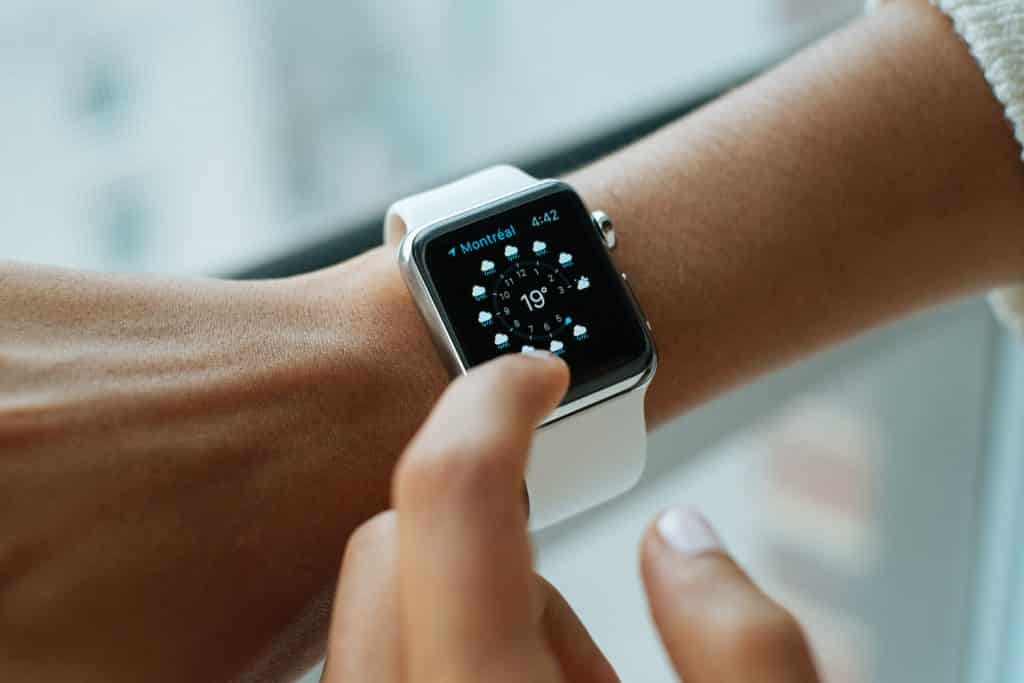As technology races forward, one of the leaders in innovation has consistently been Apple. Within the last decade, Apple made a move to revolutionize the watch industry by unleashing the Apple Watch on the world, armed with its many capabilities. This “smartwatch” ends up being a great companion and a natural ally to other Apple products, mainly the iPhone.
These days this is far from the only type of smartwatch on the market. In recent years the smartwatch market has blown up, with Apple remaining as the most widely recognized name in the field. But are these watches an ideal purchase for everyone, or do they make more sense to a particular consumer base? Are there any drawbacks to consider? Let’s take a look at some pros and cons of owning an Apple Watch.

Pros of the Apple Watch
1.) Making/Receiving Calls. The Apple Watch can be linked directly to an iPhone device, and when calls are received on the phone, they can be forwarded to the watch. So if you stepped away from your phone, chances are you won’t miss a call, as the call will, in a sci-fi, futuristic way, come in through your Apple Watch on your wrist.
2.) Design. The watch has a great modern look. Its design is sleek, and its display quality is superb. It has a large display making everything on the screen easy to see. The later models of the watch have upped the size even further. There is an assortment of colors and styles for straps that are interchangeable to suit your preference.
3.) Water Resistance. Wearing any watch always carries the inherent danger of it getting wet. Getting caught in the rain, spilling something, or simply washing your hands can put it in the way of water. With a pricey piece of electronic equipment, wearers would not be keen on water wrecking their watch. Fortunately, the Apple Watch is water-resistant (not waterproof), thereby reducing the chances of water particles short-circuiting or disrupting the user of the Apple Watch.
4.) Fitness Companion. Arguably the best and most useful feature of the Apple Watch is its ability to help track fitness workouts. While linked to your iPhone, the Apple Watch can transmit all sorts of data and analytics to your iPhone like distance run, pedometer stats, heart rate, and calories burned. The watch will also allow you to trend your workout progress from day-to-day. It can even issue exercise reminders throughout your week.
5.) Fall Detection. If you fall and get hurt, the Apple Watch is built-in with technology to recognize a fall. It can detect a hard hit, and will even inquire if you are ok. If the fallen party does not answer after 60 seconds, the Apple Watch will send out an emergency call.
Cons of the Apple Watch
1.) Battery Life. One of the shortcomings of the watch is the frustratingly short battery life. Presumably, the wearer of the watch will actively use it, but that use drains the battery quickly. While it’s average of 18 hours between charges assuming regular use is respectable, it falls short of some of its competing products like the FitBit and Samsung Smartwatch.
2.) Compatability. To use an Apple Watch, you also need to have an iPhone. This excludes a whole market of android users. While the watch does have Bluetooth functionality, Apple designed it to only work with an iPhone.
3.) App Limitations. While the Apple Watch can receive notifications from a phone, and getting rid of them off the watch, syncs the notification status with the phone, doing the reverse seems not to have the same effect. The Apple Watch might retain the notifications already cleared from the iPhone. Additionally, the large number of apps that can be used on the phone is not compatible in any way, nor can they be used by the Apple Watch. Perhaps over time, this will change, but as of now, most anything involving phone apps will have to be done on the phone.
4.) Price. The hefty price of the Apple Watch is largely tied to the brand name. It is significantly more expensive than some comparable counterparts on the market, with prices for newer models ranging from $400 to $800, depending on a variety of factors. The product certainly caters to an upper-middle and higher financial class demographic. Still, they do reduce the price of older models as frequent new models are released, so a bit of patience can get one at a more acceptable price.
- Tulip Mania – The Story of One of History’s Worst Financial Bubbles - May 15, 2022
- The True Story of Rapunzel - February 22, 2022
- The Blue Fugates: A Kentucky Family Born with Blue Skin - August 17, 2021